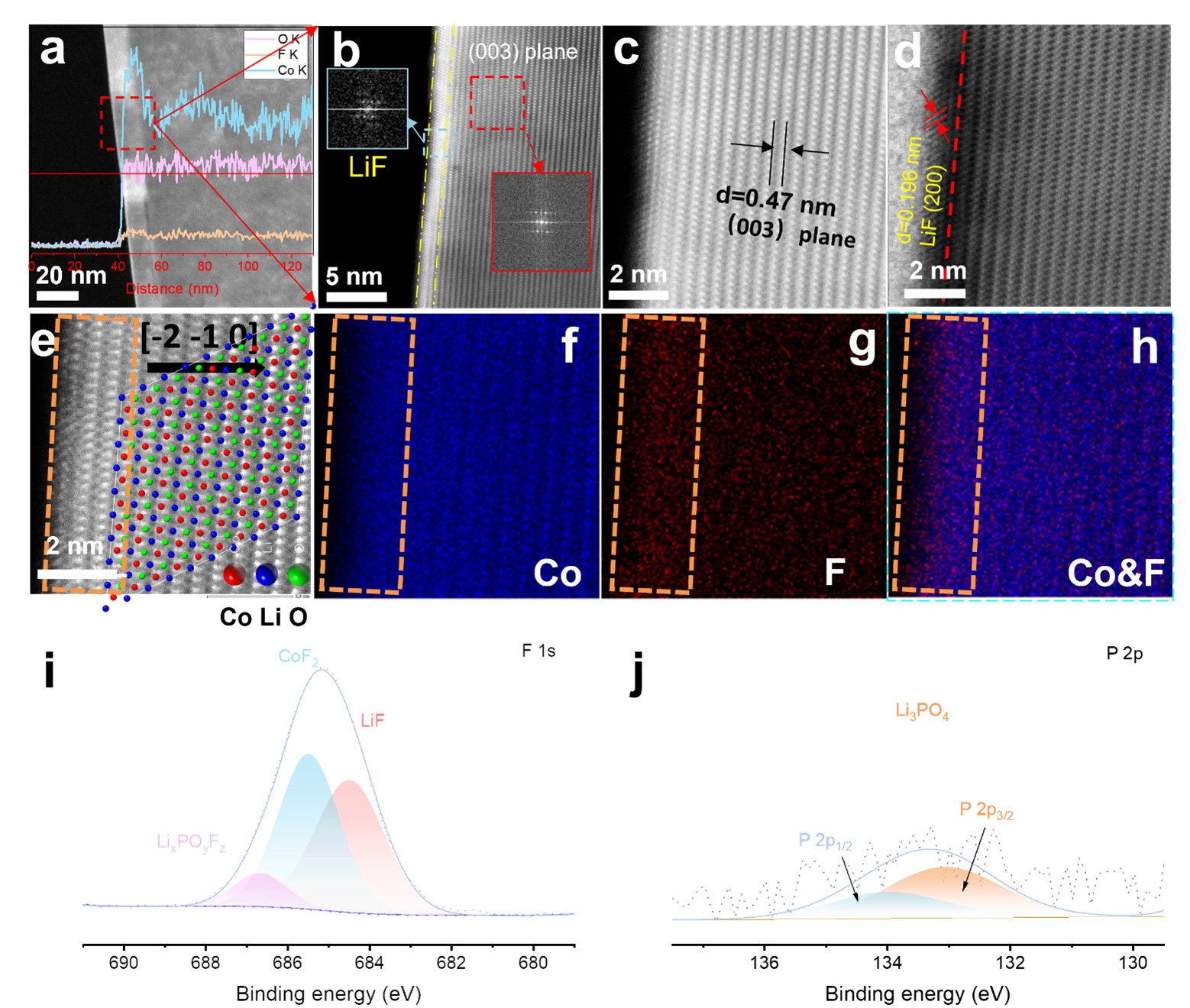Z.H. Bi ‡, Z.L. Yi ‡, L.Z. Zhang, G.R. Wang, A.P. Zhang, S.H. Liao, Q.H. Zhao, Z.Q. Peng, L. Song, Y. Wang, Z.W. Zhao, S.Q. Wei, W.G. Zhao, X.Y. Shi, M.R. Li, N. Ta, J.X. Mi, S.N. Li, P. Das, Y. Cui, C.M. Chen *, F. Pan * and Z.-S. Wu *
Energy & Environmental Science, 2024, 17.
DOI: 10.1039/D3EE03464J [PDF]

LiCoO2 (LCO) is a leading cathode material of lithium-ion batteries in consumer electronics. However, practical applications of high-voltage fast charging are hampered by unstable interfacial structures and unfavorable phase transitions arising from the superimposed high-flux Li+ diffusion of LCO during deep de-lithiation. Here, we report a universal cathode interface engineering strategy of stabilizing 4.45 V commercial LCO by surface fluorination (F-LCO) towards fast-charging long-life cyclability at a high voltage of 4.6 V. It is experimentally observed that the resulting near-surface structure with ~1 nm densely ultrathin LiF covering layer and 10~20 nm gradient fluorination lattice, together with trace amount of phosphates, provides extraordinary stabilization to the surface lattice oxygen. The F-LCO achieves a record capacity retention of 92% after 1000 cycles at 3 C, far outperforming commercial LCO (31%) and reported 4.6 V LCOs. Further, it is theoretically revealed that the antibonding orbital electron transfer in Co-F bonding greatly inhibits cobalt migration as the de-lithiation approaches 4.6 V. We unravel that the reconstructed high-energy barrier F-rich interface with enhanced charge transfer capability ultimately prevents high-valent oxygen species (On-, 0<n<2) from migrating along vacancies and evolving into oxygen to generate interfacial side reactions. Our pouch-type full cells of graphite||F-LCO offer superior high voltage (4.5 V) cyclability without capacity fade over 1100 cycles at a fast-charging 5 C rate. Therefore, this strategy of cathode interface fluorination provides new insights into the commercial realization of high-voltage fast-charging LCOs.